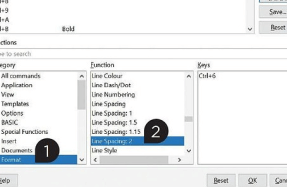PROTECT YOUR DATA

Worried about the security and visibility of your data? Do you have sensitive files you want to keep away from potentially prying eyes? Worried that your cloud backup isn’t as secure as it might be? Concerned that the data on your laptop might be vulnerable to theft? Want to dispose of files – or an entire PC – without compromising the data (including previously deleted files) on it? You’ve come to the right place.
In this feature, we explore numerous options for protecting your data, both data stored on your PC and that backed up elsewhere, whether on local storage or in the cloud. We also reveal how to ensure all data you delete is shredded beyond recovery, too, enabling you to pass on a PC or drive to a new home without having to worry about the data previously stored on it.
When it comes to sensitive files, the solution lies in a process called encryption. File encryption works using cryptography to scramble the contents of files so they’re unreadable without the correct authentication – usually a password that is used to unlock an encryption key, which in turn decrypts the file so it’s readable. Some encryption can be further strengthened by the requirement of additional forms of authentication such as so-called key files or physical devices, like smart cards.
Encryption keys are created using special algorithms. Common examples include Advanced Encryption Standard (AES) and Twofish. The higher the bitrate, the more secure the key, so 256-bit is better than 128-bit, and 512-bit is better than 256-bit. Encryption is a resource-heavy process, particularly as bitrates increase, so be prepared to see protected files take longer to open or save. If you have a modern CPU, you’ll find AES is by far the quickest encryption standard, thanks to the implementation of hardware-accelerated AES encryption on supported processors.
Encryption can be performed on individual files or entire drives, and that’s where we begin our feature, with a comprehensive guide to scrambling the files on your PC. Turn the page to get started.
When it comes to encrypting individual files or entire drives, there are numerous options available. If you’re running the Pro, Enterprise, or Education
You’re reading a preview, subscribe to read more.
Start your free 30 days





